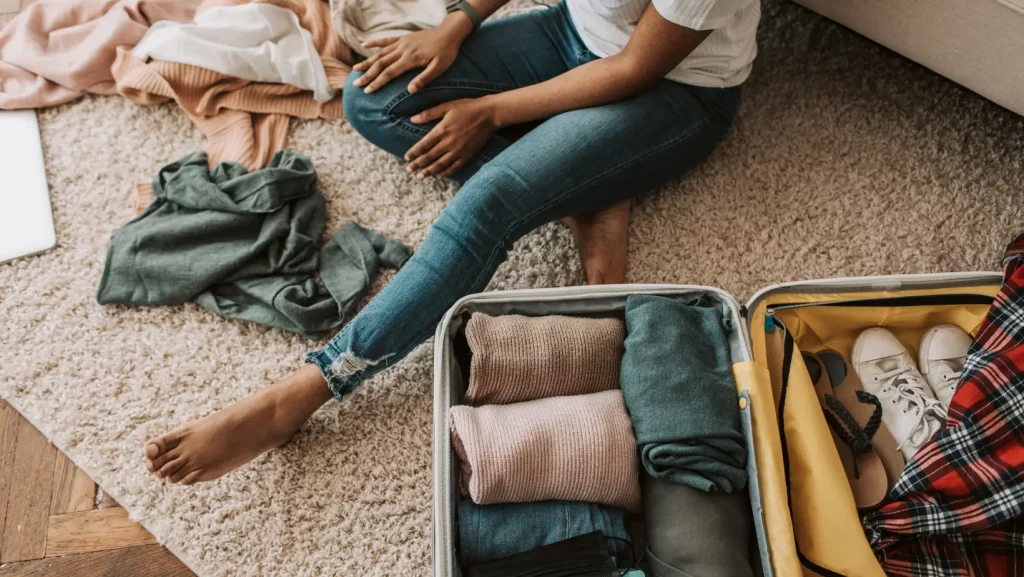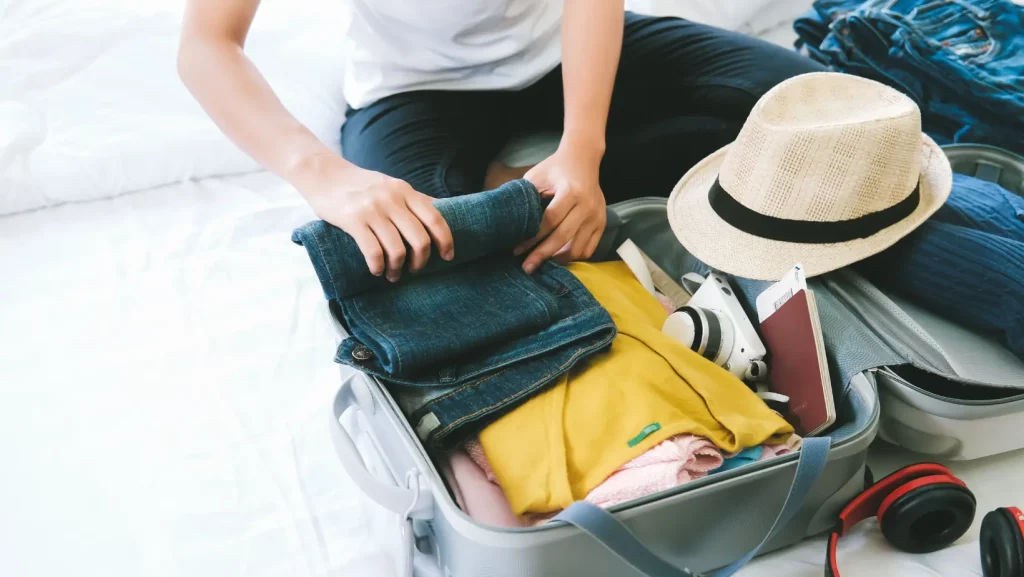How to Organize Suitcase for Travel: The Ultimate Packing Guide
Traveling can be an exhilarating experience, a chance to explore new places and create memories that last a lifetime. However, the lead-up to departure often involves a less glamorous, yet crucial activity: packing. Organizing a suitcase may seem like a mundane task, but it is an art form that can set the tone for your entire journey.
A well-packed suitcase means a stress-free start, easy access to your belongings, and more time spent soaking in the sights and sounds of your destination. In this comprehensive guide, we’ll discuss the strategies that transform packing from a chore into a simple, satisfying prelude to your adventures.
Transitioning seamlessly from the anticipation of travel to the practicalities of packing requires a blend of foresight and flexibility. Let’s take on a journey to discover the secrets of efficient suitcase organization.
The Foundation of Packing: List and Layout

Creating Your Packing List: A Blueprint for Success
Before you even open your suitcase, start with a list. This list is your blueprint; it will guide you through the packing process and ensure that nothing essential is left behind. Consider the climate of your destination, the activities you’ll partake in, and the length of your stay.
Laying It All Out: Visualizing Your Packing Plan
Once your list is ready, lay out all your items. This visual inventory allows you to spot redundancies, gauge the volume of your belongings, and make adjustments as needed. It’s the first step in transforming your packing list into a packed suitcase.
The Core Techniques: Folding, Rolling, and Compartmentalization

Folding vs. Rolling: The Great Debate
Is it Better to Roll or Fold Clothes in a Suitcase?
Folding is traditional; it’s orderly and aligns well with the suitcase’s rectangular shape. However, rolling is a space-efficient alternative that also reduces wrinkles. Use a combination of both techniques: fold formal wear and roll casual items.
This section will weigh the advantages of rolling clothes, such as reduced wrinkles and maximized space, against the benefits of folding, which includes a neater suitcase and easier unpacking. We’ll also consider the type of clothing you’re packing and how the fabric and the nature of your trip might influence your decision.
Each section will be crafted to provide actionable advice, ensuring readers can easily apply these tips to their packing process. The content will be written in a human tone, aiming to engage the reader and make the task of packing less daunting and more efficient.
Compartmentalization: The Key to Organization
Compartmentalization is not just a packing technique; it’s a philosophy. Use packing cubes, ziplock bags, and even shower caps to group items together. This method not only maximizes space but also keeps your suitcase organized throughout your trip.
The Best Ways to Pack Your Clothes
Efficiently packing your clothes not only saves space but also makes unpacking a breeze. This section will explore various techniques such as the KonMari method of folding, bundling to avoid creases, and the strategic placement of clothes based on your itinerary. We’ll also discuss how to choose versatile pieces that can be mixed and matched to maximize your wardrobe options while minimizing luggage space.
How to Pack Shoes
Shoes can take up a disproportionate amount of suitcase space if not packed correctly. We’ll discuss how to select the right footwear for your trip, considering both function and fashion. You’ll learn how to use shoe bags, the benefits of stuffing shoes with small items to maintain shape and save space, and the best placement of shoes within your suitcase to distribute weight evenly.
Shoes are not just for walking; they’re also mini storage units. Fill them with socks, chargers, or jewelry to use every available space. Similarly, the area around the suitcase’s perimeter is perfect for belts, cables, and other slim items.
How to Pack Toiletries and Beauty Products
Navigating TSA regulations and preventing leaks are key when packing toiletries and beauty products. This section will provide insights on how to use travel-sized containers, the advantages of solid toiletries, and the importance of sealing and double-wrapping. We’ll also touch on organizing products into categories and the best ways to pack them for easy access upon arrival.
Advanced Packing Strategies: The Art of Maximizing Space

The Layering Method: A Strategic Approach
Think of your suitcase as a lasagna. Start with a layer of heavier items like shoes and books at the bottom. Then, add layers of rolled clothes, followed by folded garments. Top it off with delicate items and a toiletry bag.
How to Pack Fragile Objects or Breakables
Whether it’s a bottle of wine from a vineyard visit or a delicate souvenir, packing fragile items requires careful thought. We’ll cover the use of bubble wrap, clothing, and socks for cushioning, as well as the strategic placement of these items within your suitcase. Additionally, we’ll offer tips on how to label your luggage to alert handlers of its delicate contents.
How to Pack Dirty Laundry
Maintaining a separation between clean and dirty clothes is essential. We’ll explore options such as laundry bags, compression sacks for odor control, and the use of charcoal odor absorbers. Plus, we’ll provide advice on how to deal with particularly soiled items and the benefits of doing laundry before returning home.
Personalizing Your Packing: Adapting to Your Travel Style
For the Business Traveler: Keeping It Crisp
Business trips demand a wardrobe that’s sharp and presentable. Use garment folders for suits and shirts to keep them crisp. Also, prioritize a travel steamer—it’s a game-changer for last-minute touch-ups.
For the Adventure Seeker: Gear and Gadgets
Adventure travel requires gear that’s often bulky and irregularly shaped. Use compression sacks for bulky items like sleeping bags and jackets. Also, dedicate a cube or pocket for the gadgets that will capture your memories.
The Final Touches: Security and Accessibility

Ensuring Security: Peace of Mind in Transit
Security is important. Use TSA-approved locks and consider anti-theft luggage. Additionally, keep valuables and essentials in your carry-on, just in case your checked luggage takes a detour.
Accessibility: Planning for In-Transit Needs
Pack a small bag or pouch with in-flight essentials—headphones, a book, a travel pillow. Keep it at the top of your suitcase or in an easily accessible pocket for convenience during your journey.
Conclusion: The Journey Begins with Packing
In conclusion, packing a suitcase is more than just a pre-trip chore; it’s the first step in your travel story. By following the strategies outlined above, you can ensure that your journey begins on a note of ease and organization.
Remember, the goal is not just to pack, but to pack smartly, allowing you to focus on the experiences ahead rather than the disarray of an unruly suitcase.
Now that you’re equipped with the knowledge to pack like a pro, why not put these tips into action? Whether you’re planning a weekend getaway or a month-long expedition, start your journey here, with a perfectly packed suitcase.
And when you return, full of stories and memories, consider sharing your own packing tips and tricks with us. After all, every traveler’s experience is a new chapter in the art of packing.
Visit Coulf to learn more!










